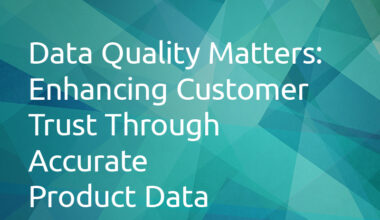In the ocean that is ecommerce, data is the ship that retailers navigate. From product details to customer reviews, every byte of data impacts business decisions and user experiences. However, just like any vessel, over time, this ship can accumulate debris in the form of inaccurate, obsolete, or redundant data. This is where the concept of data cleansing sails to the rescue, ensuring that your ecommerce journey remains smooth and profitable. Here’s a closer look at how effective data cleansing can be a game-changer for your ecommerce performance.
The Significance of Data Cleansing
Data cleansing, also known as data scrubbing, is the process of detecting and rectifying (or removing) errors and inconsistencies in data. The primary goal is to enhance the quality of the data being used. For ecommerce businesses, this involves cleaning product databases, customer details, transaction histories, and more.
How Data Cleansing Enhances Ecommerce Performance
1. Improves Decision Making: Clean, accurate data enables businesses to make informed decisions. Whether it’s deciding on a product launch or crafting a targeted marketing campaign, data without inaccuracies or redundancies leads to better outcomes.
2. Enhances User Experience: Imagine a potential customer searching for a product and encountering outdated or incorrect information. It’s likely they’ll lose trust and navigate away. Clean data ensures that customers find what they’re looking for without any hitches.
3. Optimizes Operations: Accurate inventory data prevents overstocking or stockouts. Similarly, having accurate customer data means better and faster customer service.
4. Boosts SEO Performance: Clean product descriptions and metadata improve search engine rankings, driving more organic traffic to your online store.
5. Increases Conversions: Clean data ensures relevant product recommendations, leading to higher conversions. If recommendation engines work with outdated or irrelevant data, the recommendations may not resonate with the shoppers.
Implementing a Data Cleansing Routine
– Regular Audits: Schedule regular data audits. Identify and rectify inconsistencies or errors in your product listings, prices, customer details, etc.
– Use Automated Tools: There are many data cleansing tools available that can help in automating the process. They can detect duplicates, spot errors, and even suggest corrections.
– Feedback Loop: Encourage customer feedback. If a customer spots an error, make it easy for them to report it. This not only fixes data but also enhances customer trust.
– Maintain a Data Quality Team: If resources allow, having a dedicated team or individual focusing on data quality can be a game-changer.
The Challenges of Data Cleansing
While the benefits are many, the process isn’t without challenges. The biggest hurdle is the sheer volume of data that large ecommerce businesses deal with. Manual cleansing can be time-consuming. Over-cleansing is another issue; if not done judiciously, important data might be lost.
However, with a strategic approach and the right tools, these challenges can be managed efficiently.
Wrapping Up
In ecommerce, staying updated isn’t just about the latest trends but also about maintaining the most accurate data. Effective data cleansing not only boosts the performance of your ecommerce platform but also enhances customer trust and loyalty. It ensures that as a retailer, you’re always sailing in clear waters, maximizing your potential at every nautical mile of your ecommerce journey.
 1.416.619.5349 Ext.325
1.416.619.5349 Ext.325 







